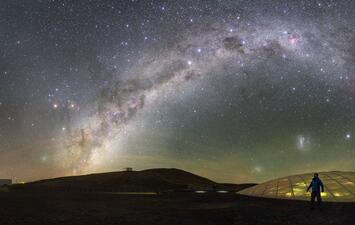
Suzie Bohlson sits in a sun-drenched California plaza, a pale, slight 53-year-old with a Ph.D. in biology from Notre Dame. Fifteen years ago, she converted to Catholicism, a surprising choice, perhaps, for a young woman from Los Angeles raised in a family of materialist scientists.
Though her grandfather was a Lutheran minister in rural Pennsylvania, religion was seldom discussed in her family’s Los Angeles home. Her father taught at UCLA, where her mother earned four degrees. “Physics was my father’s religion,” she says with a slight smile. “I was raised with the belief that reality was physics, chemistry, and biology.”
Now director of both the Master of Science in Biotechnology and Biotechnology Management programs at the University of California–Irvine, she came to believe that, as she looked at the structure of biological life, she could feel some organizing intelligence in the systems she studied. “I started to realize that science and religion complement each other.”
Bohlson admits she did not share her Catholic faith with most of her co-workers until recently. “I was a closet Catholic,” she says. “I was in a culture of science filled with very anti-religious opinions. People assume if you are Catholic, you have certain conservative views on women and gender that I don’t share.”
In recent months, however, Bohlson has come out of the “closet,” speaking openly of her faith to colleagues and joining the growing ranks of Catholic scientists in America. For her, the trend isn’t about politics; like most of her colleagues, Bohlson is a Democrat. It’s about melding knowledge and faith, embracing the spirit of St. Ignatius, the founder of the Jesuit order. “In a university where no one talks about God, it’s important for people to see how God can make you happier, and that, in learning science, we learn his existence is evident.”
Whatever their current religious orientation, many spiritually inclined scientists draw inspiration from recent breakthroughs in fields like biology and physics that have seemed to move us away from the mechanistic, predictable outcomes suggested by Enlightenment science and philosophy—and toward a view in which uncertainty and mystery appear to play a fundamental role.
Perhaps the key turning point was the Big Bang. In the early twentieth century, scientists, including Albert Einstein himself, believed in a steady-state universe that had no beginning or end. Later, theoretical physicist and Catholic priest Georges Lemaître showed how Einstein’s own theory of General Relativity aligned with the astronomer Edwin Hubble’s then-controversial observations that the universe was expanding, and thus—if one followed the process backward through time—had a beginning. Today, Lemaître is known as the father of the Big Bang theory.
As Einstein pondered these and other findings, his views, particularly toward the end of his career, evolved in the direction of acknowledging a belief in a divine force. He looked to the Jewish philosopher/scientist Baruch Spinoza for inspiration and spoke openly of embracing “a cosmic religious feeling.” Einstein’s German contemporary Werner Heisenberg described a similar evolution. “The first gulp of the natural sciences will turn you into an atheist,” he wrote, “but at the bottom of the glass God is waiting for you.”
Read the rest of this piece at City Journal.
Joel Kotkin is the author of The Coming of Neo-Feudalism: A Warning to the Global Middle Class. He is the Roger Hobbs Presidential Fellow in Urban Futures at Chapman University and and directs the Center for Demographics and Policy there. He is Senior Research Fellow at the Civitas Institute at the University of Texas in Austin. Learn more at joelkotkin.com and follow him on Twitter @joelkotkin.
Anthony Lemus is a professor of practice and director of industry relations at Chapman University’s Fowler School of Engineering.
Photo: Milky Way above European Southern Observatory(ESO) Paranal Observatory in Chile, by P. Horálek via Flickr under CC 2.0 License.












